Core Kyoto - Season 2 / Year 2014

Season 2 / Year 2014

Episodes
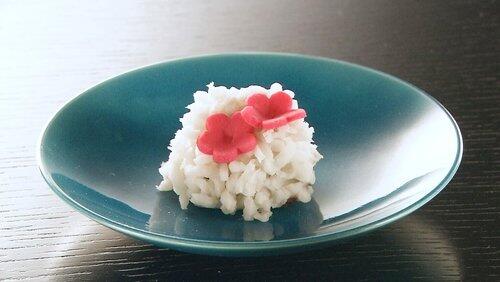
Kyoto Confections: Experiencing Kyoto Culture Through the Five Senses
Kyoto confections are Wagashi, or traditional confections, infused with Kyoto's charm and influenced by the tea ceremony. With beautiful designs and names that subtly reflect the seasons, tea confections are an art form to be appreciated with the 5 senses. When making these confections, importance is placed on the semblance and name they are given. Inspiration is drawn from local nature, art, music and literature. Feel Japan's culture, nature and climate through flavorsome Kyoto confections.
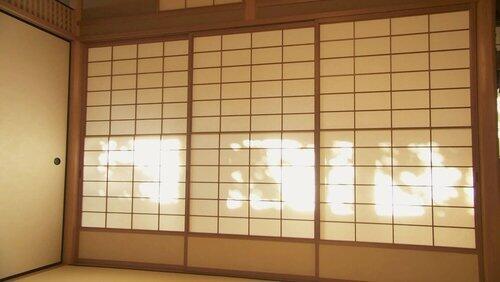
A Washi Capital: Paper of Diverse Beauty and Use for City Life
Traditional washi paper flourished in the temples, shrines and palaces of the ancient capital. Enduring today, this versatile paper is used to decorate interiors, such as sliding doors and hanging scrolls. Kurotani has been the papermaking center of Kyoto washi for 800 years. Katazome-washi is dyed with traditional yuzen-dyeing patterns. Useless washi and centuries-old books are used in recycle-themed artworks. The efforts of Kyoto's artisans and artists nurture Kyoto's washi culture.
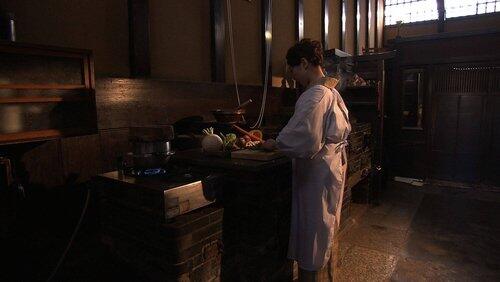
Obanzai: The Frugal Wisdom of Kyoto's Home Cooking
Obanzai are the frugal side dishes that grace dinner tables daily in Kyoto - the home of washoku, or Japanese cuisine. Cooked to make the staple dish of rice taste delicious, they use only simple ingredients. The wisdom in the preparation is eco-friendly; scraps are reused, none are discarded. The menu handed down in the Sugimoto clan for more than 200 years embodies the spirit of obanzai. Washoku was added to UNESCO's Intangible Cultural Heritage list in 2013, and obanzai is in the spotlight.

Ikebana: Revealing the Full Potential of Flowers
Ikebana is the traditional art of flower arranging. Developed in Kyoto it merges Asian naturalism with the floral offerings to Buddhist altars. The Ikenobo headmaster upholds the school's 550-year-old tradition. A potter imagines vases as extensions of the flowers they hold. A practitioner creates progressive arrangements steeped in tradition. Plants are not mere ornaments. Practitioners impose their lives on that of the flowers. Ikebana's quintessence is in the representation of life as beauty.

Calligraphy: Elegance Within a Black-and-White Universe
Calligraphy is the art of writing characters with a brush. The use of kanji characters, which entered from China, spread with the practice of copying sutras. In temples and shrines, the art projects the state of the practitioner's mind. Calligraphy developed independently through the kana syllabary 1,200 years ago. Kana calligrapher Koho Hibino, master of a flowing style, says it embodies Japanese emotional and aesthetic sensibilities. Discover the essence of the black-and-white realm of calligraphy.

Kin-butsudan: Faith Shines Brilliant in Craft That Embodies Nirvana
The butsudan Buddhist family altar was built as a miniature of the temple dais upon which the main image stands, so families could worship at home. Reflecting the Pure Land in this world, butsudan not only hold Buddhist images but are also vehicles for people to communicate with their ancestors. Kyoto altars, called kin-butsudan, are decked with gold metalwork and maki-e lacquer. Their beauty is an unparalleled work of art. Strongholds of the heart, kin-butsudan show the core of Kyoto culture.
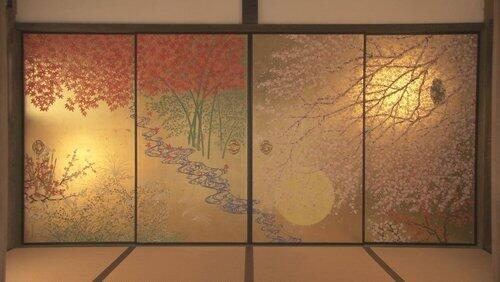
Rimpa: An Artistic Style Transcending Time
Tawaraya Sotatsu, who emerged from Kyoto's merchant class, was one pioneer of the Rimpa School in the early Edo Period, and Ogata Korin consolidated it in the mid-Edo Period. The school is not hereditary but is propagated by artists, who admire Sotatsu and Korin, and follow their styles. Rimpa is characterized by a notable use of space; abstract, vibrant designs; and creative playfulness. The works of Kyoto-based Nihonga artists continue the Rimpa style 400 years after its inception.

Bamboo Culture: New Life in Spring Enriches the Ancient Capital
Kyoto has long-been a leading bamboo-growing region. Bamboo was considered holy in ancient times for its strong vitality. It is used at shrines and palaces as the barrier between the sacred and secular worlds. Gagaku music for the deities is played on bamboo instruments. Since Heian times, this durable, pliable material was important in the development of Japanese architecture in Kyoto, such as garden gates and fences. Bamboo also appears in various capacities in the diet and clothing of Kyoto.

Kyo-yuzen: Garments of Beauty Radiate Elegance
Kyo-yuzen fabric has distinct patterns and splendid, delicate colors. Kyo-yuzen dyed kimono brighten special occasions in Kyoto. A lady takes extra care of her grandmother's kimono that is filled with joyous memories. An established wholesaler and its skilled artisans resolutely provide the ultimate in kyo-yuzen. An artist, whose one aim is to make women shine beautifully, breathes life into kyo-yuzen. Admire the beauty of Kyoto attire through kyo-yuzen, nurtured by a refined eye for beauty.
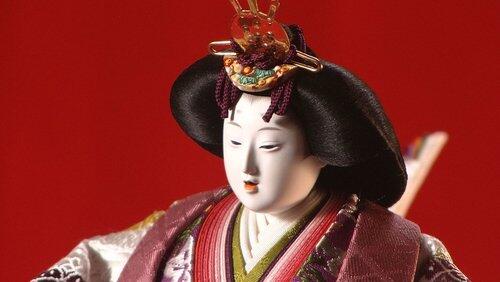
Kyoto Dolls: Adored by All, Their Grace Brings Peace
Filled with noble, graceful dignity, Kyoto dolls have long embodied people's prayers, relieved loneliness, and represented prayers for their children's growth. Connected to dynastic culture, these dolls evolved in the hands of talented Kyoto artisans. Edo-period craftsmen honed their doll-making skills, and these techniques are still practiced. Hina dolls reflect adoration for the nobility. Gosho dolls were adored at the palace. Find out how people's hearts are connected through Kyoto dolls.
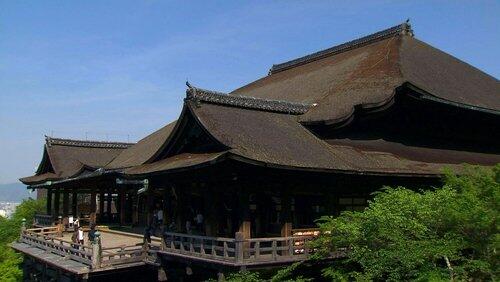
Buddhist Architecture: Craftsmanship Unites Places of Worship
Kyoto is home to most Buddhist head temples, which shaped the ancient capital's historical landscape and fascinate visitors. Shichido-garan, the 7 most important buildings for Zen religious training, are positioned in the shape of a person. Maintaining temples for centuries, carpenters conduct major repairs at Chion-in and thatch Kiyomizu-dera's main-hall with cypress bark using traditional roofing methods. Look at the world of Buddhist architecture, sustained by craftsmanship and faith.

Fitting for the Deities: Sacred Ornamentation Purifies and Elevates
Shinto shrines have sacred shimenawa ropes, bells with cords attached, mirrors, various fittings, and ceremonial ornamentation that have adorned these places of worship since time immemorial. Made from wood, metal, silk threads, hemp, and other materials, this ornamentation became more elaborate and brilliant in the hands of artisans who gathered in the ancient capital, Heian-kyo, when it was established some 1,200 years ago. These crafts, which live on today, link worshippers with the deities.
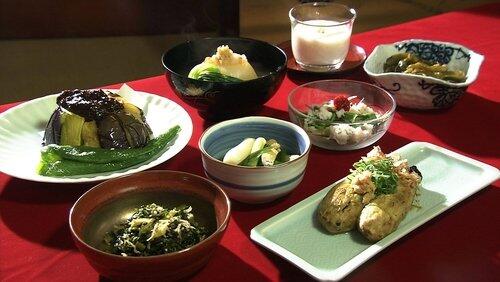
Kyoto Vegetables: Nature's Blessings Provide Fine Food for the Ancient Capital
The Kyoto basin is blessed with fertile soil and an abundant supply of good water. Kyoto winters are frigid; and summers, scorching. This environment yields eggplants, pumpkin, and other produce known as 'Kyoto vegetables', many of which have been grown for more than 150 years. One local farmer works to promote new varieties, while students try to revive an almost extinct variety of gourd. Discover the allure of nutritional, flavorsome Kyoto vegetables in the hands of various chefs.
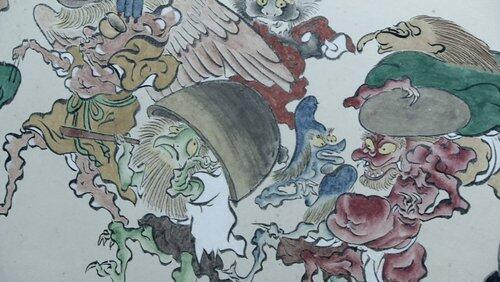
Legends of the Spirit World: The Mysterious Inspires Awe in the Townsfolk
Ogres, specters, demons, ghosts and hell. The ancient capital's many myths of the spirit world seem fantastic today. Kyoto's citizens lived in fear and awe of the other world and appealed to the deities for help. They honored milestones and kept the annual events in thanks to the deities for their protection. Consequences of the city's prosperity, the legends have origins in the deep in the recesses of the human mind, and the epidemics and wars that occurred throughout Kyoto's history.

Gozan-no-okuribi: Ceremonial Bonfires Give Ancestors Safe Passage
The Japanese believe their ancestors' spirits return from the other world to visit during Obon in mid-August. The Gozan-no-okuribi ceremony to send them off is held in Kyoto at the end of Obon on August 16. Bonfires are lit on five Kyoto mountains as guides for the spirits to find their way back safely. Watch the locals' prepare for this fiery traditional event in the Matsugasaki area of Kyoto, where two of the bonfires are lit, and discover the ancient customs of the living and the dead.
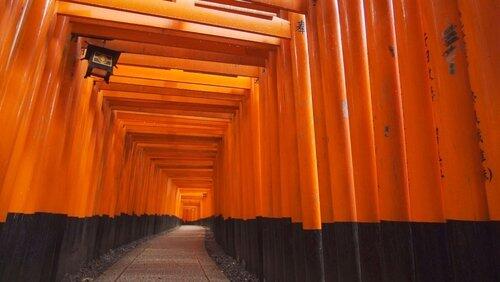
Fushimi Inari Taisha: A Manifestation of Prayers to the Deities on the Mountain
Fushimi Inari Taisha is famous worldwide for the vermillion shrine gates that line the paths in the mountain behind it, where its origins lie. Worshippers seeking happiness have visited this sacred ground where the deities rest for centuries. One family prays religiously every month for business prosperity. Another has the divided spirit of the deity protecting their home and business. Kyotoites live for the future, every day in thanks, through the shrine that embodies their unwavering faith.

Noh: A Spiritual Performing Art Bridging Fantasy and Reality
Noh is one of the oldest, extant performing arts and is a UNESCO Intangible Cultural Heritage of Humanity. It has been performed in Kyoto some 650 years, and its form remains largely unchanged. Through few moves and props, the plays portray human drama around age-old themes, such as love and parent-child bonds. Protagonists are mostly spirits of the dead telling of their earthly grief and joy. Within the seemingly expressionless masks lies a subtle beauty, drawing spectators into a dream world.

Dynastic Culture: The Graceful Form of the Heian Aristocracy
Dynastic culture thrived some 1,200 years ago in Heian-kyo, heavily influenced by mainland Asian, especially Chinese, culture. Over time, it developed its own idiosyncrasies and permeated all aspects of life: clothing, architecture and food. The invention of the kana syllabary spawned waka poetry, essays and novels. For 800 years the Reizei clan has kept the waka traditions and other aristocratic rituals alive. The roots of today's Japanese culture can be seen in elements of dynastic culture.
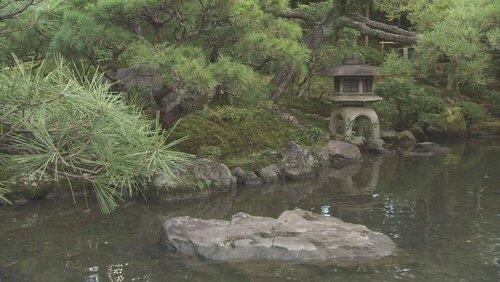
Kyoto Gardens: Aesthetic Spaces Mirror Nature
Gardens are miniatures of nature. The first ornamental gardens go back to the 8th century. The Heian nobility held events, rituals and pleasure-boat parties in their gardens. The structure of Kyoto gardens changed over the centuries, copying landscapes. In the late 19th century, garden designer Ogawa Jihei constructed an expansive garden that captures the view of Kyoto's mountains. Discover Kyoto's horticultural culture through the work of a modern garden designer, a plantsman and a mason.
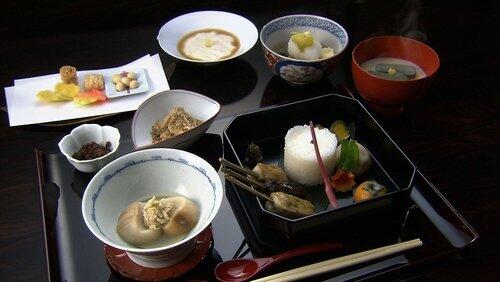
Shinise Food Culture: The Taste of Kyoto Links Past and Present
Kyoto boasts upwards of 1,000 shinise businesses, each more than 100 years old, many of which are in the food industry. Kyoto cuisine is the foundation of washoku Japanese cuisine, and these shinise are its core. Their trade names, signboards and noren curtains convey the philosophy and principles of operating a shinise. The spirit of the artisans focuses on honoring traditional skills and conventions while concentrating on the future. Discover Kyoto's culture through its timeless food culture.
Recently Updated Shows

Invasion
Earth is visited by an alien species that threatens humanity's existence. Events unfold in real time through the eyes of five ordinary people across the globe as they struggle to make sense of the chaos unraveling around them.

Peacemaker
This James Gunn-created series continues the saga of Peacemaker, a vainglorious superhero/supervillain who believes in peace at any cost — no matter how many people he has to kill. After a miraculous recovery from his duel with Bloodsport, Peacemaker soon discovers that his freedom comes at a price.

48 Hours
48 Hours is a CBS news magazine that investigates intriguing crime and justice cases that touch on all aspects of the human experience. Over its long run, the show has helped exonerate wrongly convicted people, driven the reopening -- and resolution -- of cold cases, and changed numerous lives. CBS News correspondents offer an in-depth look into each story, with the emphasis on solving the mystery at its heart. The program and its team have earned critical acclaim, including 20 Emmys and three Peabody Awards.

Wednesday
Smart, sarcastic and a little dead inside, Wednesday Addams investigates a murder spree while making new friends — and foes — at Nevermore Academy.

Shifting Gears
Shifting Gears centers on Matt, a stubborn, widowed owner of a classic car restoration shop. When Matt's estranged daughter and her teenage kids move into his house, the real restoration begins.